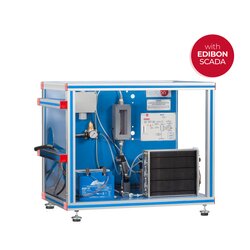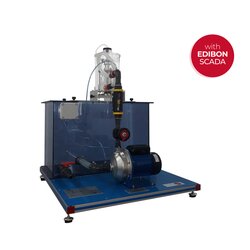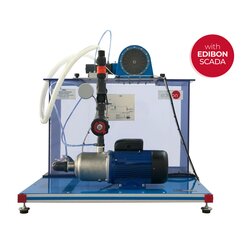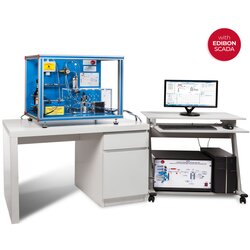Wind Power Plants with Double Feed Induction Generator (AEL-WPP)
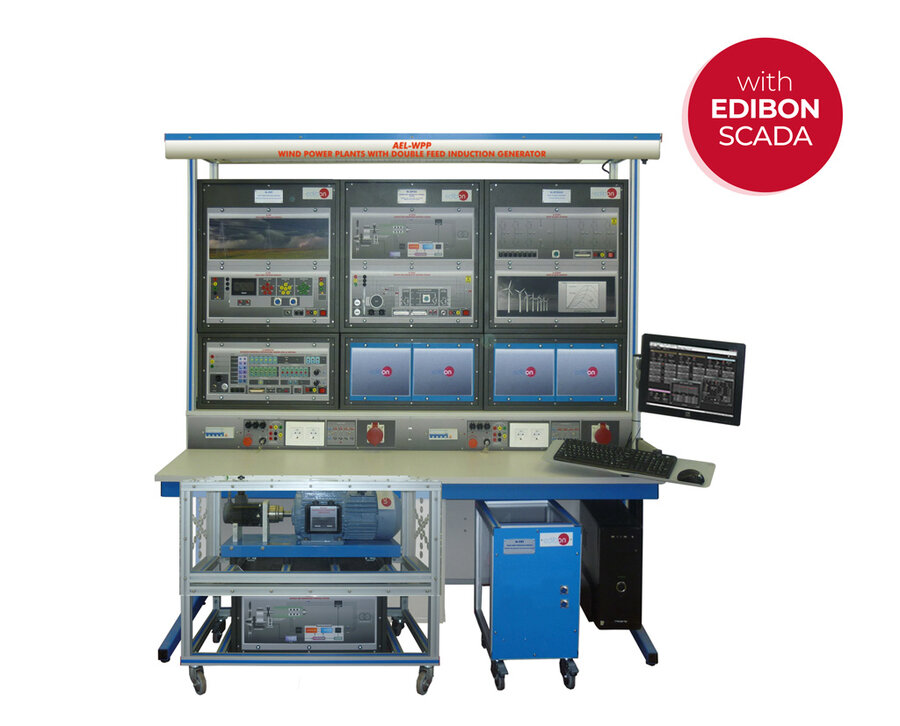


PL-511198
The "AEL-WPP" Wind Power Plants with Double Feed Induction Generator Application is designed for studying the structure and operation of modern wind power stations. It includes a prime motor that drives a double-feed induction generator, emulating the core function of a wind power plant. This unit is managed by a SCADA Control System, offering several essential features for both configuration and analysis.
The SCADA system enables users to set up a wind curve that the experiment will follow. Once the desired wind curve is configured, the "AEL-SERIN/CA-1K" motor automatically recreates it, providing realistic wind simulation during testing. SCADA also displays critical system signals, such as rotor and stator currents, line voltage, and the DC bus voltage of the back-to-back inverter, as well as system metrics like rotor and stator active and reactive power, total power, and generator shaft speed.
The data collected during the experiment can be saved and analyzed using the included data visualizer, which is compatible with Microsoft Excel. Additionally, SCADA allows users to simulate voltage dips within the electrical network, affecting the doubly fed induction generator. This simulation capability includes voltage drops of 20%, 40%, and 60%, with adjustable injection times, allowing users to safely observe the turbine’s behavior under different stress conditions without risk of equipment damage. This comprehensive control system provides a complete environment for exploring the performance and response of wind turbines under varying conditions.
- AEL-WPP. Unit:
- EMT8B/1.5K. 3PH Wound Motor, 1.5 kW, 4 Poles.
- N-DFGC. Double-feed Generator Control Module.
- N-FRT. Fault Ride Trough Module
- N-BTBINV. Back to Back Inverter.
- N-SERINCA1K. Advanced Industrial Servosystems Module for AC Motors.
- AEL-PC. Touch Screen and Computer
- AEL-WBR. Electrical Workbench (Rack).
- All necessary cables to realize the practical exercises are included
The complete unit includes as well:
- Advanced Real-Time SCADA.
- Open Control + Multicontrol + Real-Time Control.
- Specialized EDIBON Control Software based on LabVIEW.
- National Instruments Data Acquisition board.
- Calibration exercises, which are included, teach the user how to calibrate a sensor and the importance of checking the accuracy of the sensors before taking measurements.
- Projector and/or electronic whiteboard compatibility allows the unit to be explained and demonstrated to an entire class at one time.
- Capable of doing applied research, real industrial simulation, training courses, etc.
- Remote operation and control by the user and remote control for EDIBON technical support, are always included.
- Totally safe, utilizing 4 safety systems (Mechanical, Electrical, Electronic and Software).
- Designed and manufactured under several quality standards.
- Optional ICAI software to create, edit and carry out practical exercises, tests, exams, calculations, etc. Apart from monitoring user’s knowledge and progress reached.
- This unit has been designed for future expansion and integration. A common expansion is the EDIBON Scada-Net (ESN) System which enables multiple students to simultaneously operate many units in a network.
- AEL-WPP/CCSOF. Computer Control + Data Acquisition + Data Management Software:
- Cables and Accessories, for normal operation.
- Manuals: This unit is supplied with 8 manuals. Required services, Assembly and Installation, Interface and Control software, Starting-up, Safety, Maintenance, Calibration and Practices manuals.
EXERCISES AND PRACTICAL POSSIBILITIES TO BE DONE WITH THE MAIN ITEMS
- Identifying elements and devices.
- Supply and modules signals wiring.
- Commissioning of application.
- Analyzing the system states: starting and loading the DC bus.
- Identifying modulation inverter start back to back.
- Stop sequence double feed induction generator.
- Study of the double-feed asynchronous machine with subsynchronous speed.
- Study of the double-feed asynchronous machine with supersynchronous speed.
- Study of the system behavior during the simulation of voltage dips in the network (“fault ride-through”).
What is this?
These percentage scores are an average of 0 user reviews. To get more into detail, see each review and comments as per below
If you have used this product, support the community by submitting your review
